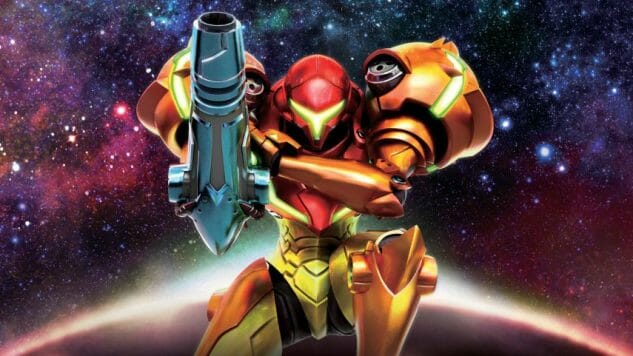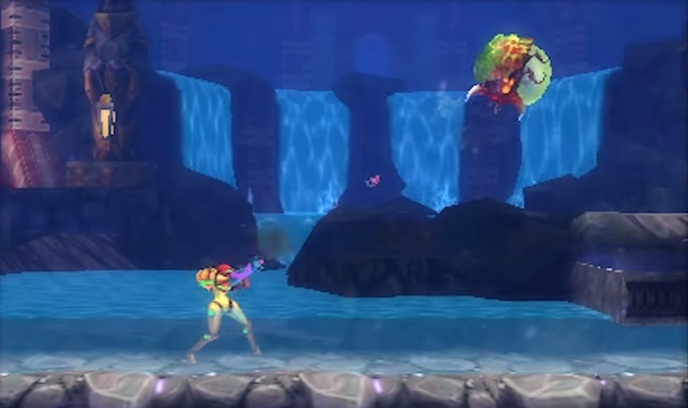
I’ve written a fair bit about Metroid: Samus Returns here already. I’ve noted how the parry technique noticeably changes way Metroid has handled combat for decades, slotted it in near the top of our ranking of every Metroid game, and added it to our list of the best games of the year so far. Despite all that, it still merits its own review. After all, I’ve had a copy for over six weeks, and I’m still finding time to play it.
Samus Returns navigates some pretty tricky territory. It tries to capture what made the old two-dimensional Metroid games so beloved back in the ‘80s and ‘90s, while also imprinting its own stamp on that basic Metroid design. It began as a remake of the original Game Boy sequel, 1992’s Metroid II: Return of Samus, and that still shines through in its basic structure. Like that game, you’re not just exploring and backtracking through this alien planet to gather enough weapons to take down a specific final boss; you’re hunting exactly 40 metroids strewn throughout the world’s various distinct areas. There are enough changes to make this feel like a new game, though, hence the “reimagining” tag regularly applied to it in Nintendo’s marketing (and pretty much every article that’s been written about it). The parry mechanic is the most dramatic alteration: if you hit a button at the right time, you can fend back almost every enemy in the game, momentarily stunning them and leaving most open for a single-shot kill. This parry even comes into play in the metroid battles that serve as de facto miniboss encounters throughout the game—you can take them down by patiently spamming missiles at them when their weak spots are unguarded, but if you can master the reflexes needed to parry their attacks, you enter a brief little interactive cut-scene where you can just unload missiles into them. It’s a short-cut, but one you have to earn, as there’s a very small window to effectively parry. If your timing is right, you can sail through most of the game on the backs of that one defensive maneuver.
In many other regards this is an extremely traditional Metroid game. The core power-ups that you expect are in effect—missiles, super missiles, the morph ball, energy tanks, the screw attack, etc. The levels sprawl out in all directions, with you charging through them from a 2D, side-scrolling perspective. After cobbling together the game’s various weapons, you can open certain doors that were previously closed off to you, or find new hidden areas, often containing additional power-ups. Backtracking is crucial and constant, as you’ll regularly return to old haunts to access places that were tantalizingly just out of reach before, or to discover previously unknown chambers and passageways. That structure remains as enrapturing as ever, with the portability of the 3DS making it far too easy to stay up past your bedtime to keep pushing through the alien dark.
If you write about videogames you wind up writing a lot about nostalgia. It’s hard not to dredge it up when talking about a game like Samus Returns, which intentionally calls back to a style innovated by the original in 1987. If you played Metroid on the NES, Super Metroid in the early ‘90s, or any of the other two-dimensional Metroid games made for Nintendo’s handhelds over the years, Samus Returns will be an instant jolt of history, an immediately recognizable old friend that might have picked up a few new tics and traits but is still largely the comforting presence you’ve known for decades. Any new Metroid could’ve coasted by on that sensation, pleasing the diehards while also winning new converts on the back of a timeless design philosophy, but the creators behind Samus Returns weren’t content with mere homage. They’ve added their own unique threads to the Metroid tapestry, introducing a significant new mechanic that fits seamlessly into a classic framework.
Metroid: Samus Returns was developed by MercurySteam and Nintendo and published by Nintendo. It’s available for the 3DS.
Garrett Martin edits Paste’s games and comedy sections. He’s on Twitter @grmartin.
